You know when you’re browsing a website, finally click on a product, and another part of the page then shows recommendations of other products you might also like? This is personalization in action.
To be more specific, eCommerce personalization is all about delivering individualized content (discounts, offers or product recommendations) to website visitors based on their previous actions, demographics and other personal data.
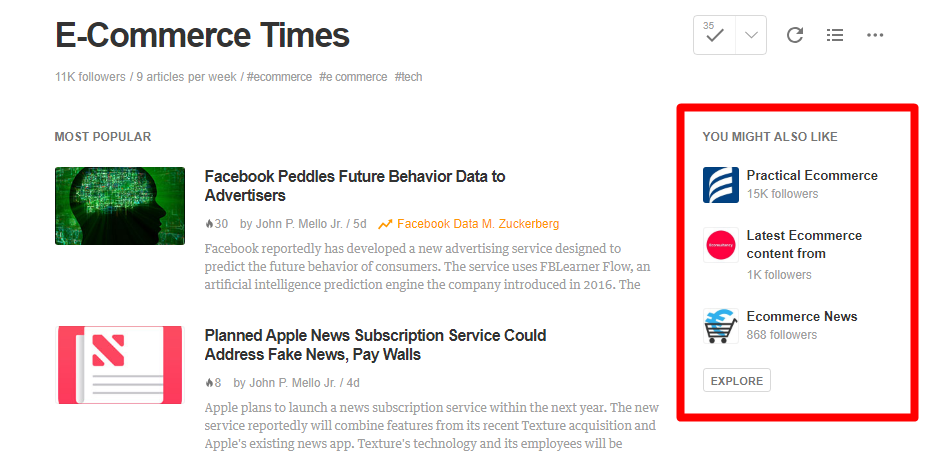
Example of personalization from Feedly
Personalization is one of the hottest trends in eCommerce right now and leveraging it in your eCommerce strategy will definitely help grow your conversion rates and customer lifetime value. In addition, 56% of online shoppers say they’re more likely to return to a site that recommends products, and 59% of marketers are experiencing positive ROI after personalizing their online stores.
However, personalization is more than just recommending products, and it’s definitely not restricted to eCommerce websites. This strategy has to be integrated into all of your marketing channels: email, social media, affiliate marketing, mobile, live chat and others you are using.
Keep in mind that no matter the channel, these techniques can’t be 100% efficient if they are not tested. Every brand or business has a unique target audience, so it’s important to mix it up and A/B test personalization strategies until you get the desired results.
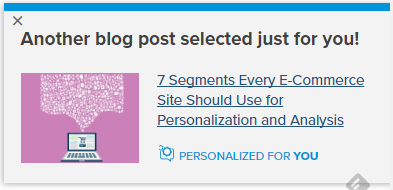
Example of personalization from Evergage
Another benefit of personalizing the shopping experience is that it paves the way for up-sells and cross-sells. To provide context, 59% of online shoppers believe that it’s easier to find more interesting products on a personalized online retail store, thus prompting them to spend more.
The one absolute don’t of personalization is pushing visitors away with irrelevant content or recommendations. People are more likely to shop on a website that offers a personalized experience, but it has to be tailored according to their actual needs. It’s a no-brainer to give your customers what they actually want to see. Always personalize your online shop with user needs in mind, and provide recommendations that are backed up by data about actual purchase patterns.
Also, be careful not to over-personalize the shopping experience, because that can put undesired pressure on your customers. Ultimately, they could end up not finding the product they wanted to buy in the first place and turning away to a less “cluttered” website. Timing is another aspect of personalization you should consider: seeing a perfectly tailored recommendation doesn’t matter if your customer is focused on something else at the time.
The key to nailing your personalization strategy lies in effective customer segmentation.
Some factors that should inform your personalization tactics and segmentation strategies are:
- The relationship you have with your customers (whether they are returning, potential or first-time buyers)
- Your customer’s needs or intentions
- Their receptivity to your company’s messaging
- Marketing channels you are using to reach out to them
- The device(s) your shoppers are using
- User behavior on the website and browsing habits
- Demographics and other personal data (their birthday, for example)
- Location and time
- Users who have similar behavior
These are just a few ideas; your personalization options are nearly endless. The only thing that could limit you is the data you have collected on your customers, but you can pull off personalization even with a limited amount of information.
Next, we’ll cover some personalization best practices and strategies.
1. Help your clients make the right purchase for their needs
Many visitors are uncertain of what they actually want to buy. They either don’t know exactly what they need, or they just can’t find the corresponding product on your website. Make their experience as smooth as possible and help them with personalized recommendations.
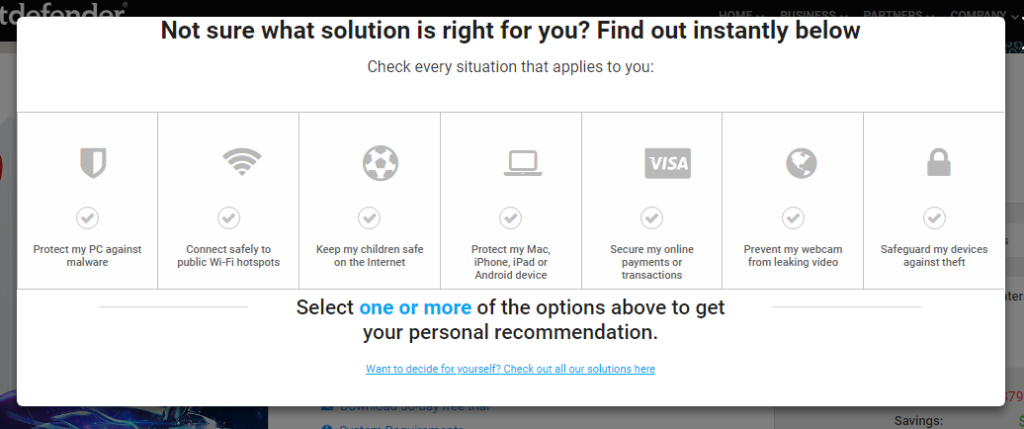
Bitdefender, for example, helps you select what matters most to you in terms of security, then suggests the product that fits your needs the best.
2. Personalize emails based on user behavior
As I stated before, personalization should not be limited to the website, because that would deliver limited results. Email is a very effective way to communicate with customers after they leave your website. Reach out to customers if they haven’t finished a purchase or are undecided about buying a product. Offer a voucher or discount to prompt the purchase, or send some useful product info if you think a prospect might need your help deciding what to buy.
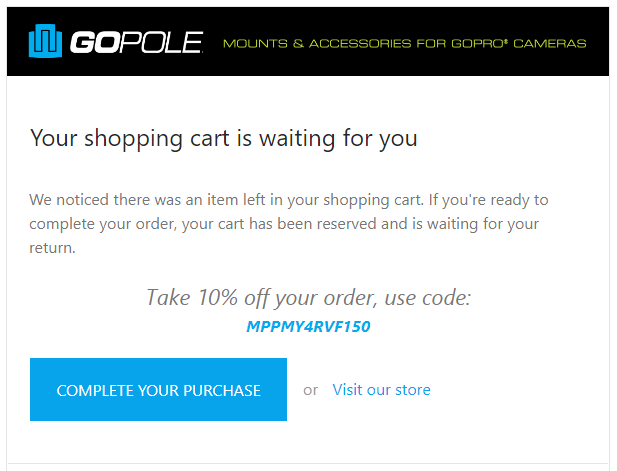
3. Personalize your website based on behavior
You can customize the user experience in your online store almost any way you want. If a user has visited your website before, you can feature products that the user viewed during the previous session, or display recommendations related to a previous order. If a user from the UK enters your website, you can display prices in pounds. Personalize as much as possible based on the info you have.

Amazon, for instance, does a great job with this. They make recommendations based on recent products viewed, browsing history and general site behavior.
Mine data based on what certain cohorts of customers purchased together. Then, come up with a strategy that creates the most efficient cross-selling recommendations for each category.
4. Refine your retargeting tactics
Retargeting is a great way to make use of your personalization strategies because it shows that you already have a relationship with your customers – either potential or returning. These customers know about you and your products, so why not try to make use of this relationship? As a best practice, the more accurately you personalize your ads for these users, the better they will convert.
The first thing to do is segment your customers and come up with some lists. Then create and test several ads for every list. For example, you can make a list of customers who have downloaded a resource from your website and recommend other resources they might find useful.
As a golden rule, don’t be aggressive and show your ads too frequently because you could risk pushing your customers away.
5. Get conversational
The need to offer personalized shopping experiences has advanced the acceptance and use of what’s called “conversational” marketing – a term coined by Drift. Basically, conversational marketing “means having real-time, one-to-one conversations with people (or chatbots) to capture, qualify and connect with your best leads.”
Conversational marketing is all about creating a more human buying experience. You can leave some part of the messaging to bots and send more advanced questions to sales or customer support representatives, who will be more focused on helping and guiding people with specific needs.
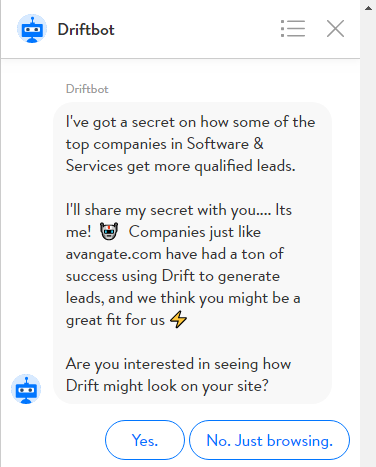
6. Give shout-outs to your customers
Spotify provides a great example of this tactic. Whether it’s a perfectly personalized playlist of music (spoiler alert: an algorithm generates it), an email thanking you for being a top listener or out-of-home advertising, Spotify demonstrates personalization at its finest.
The key takeaway is to make good use of customer data, without being intrusive. Using this strategy will not only help you connect with your customers, but will also make them feel valued. All you have to do is show them you understand and appreciate the relationship you have with them.

(Image source)
7. Make pop-ups your friend
Pop-ups are all about the content and the offer they present. The most important thing about them is having a clear call-to-action. You can use pop-ups to offer a discount for returning buyers, deliver birthday wishes or welcome back returning visitors, to provide just a few examples. The possibilities are endless.
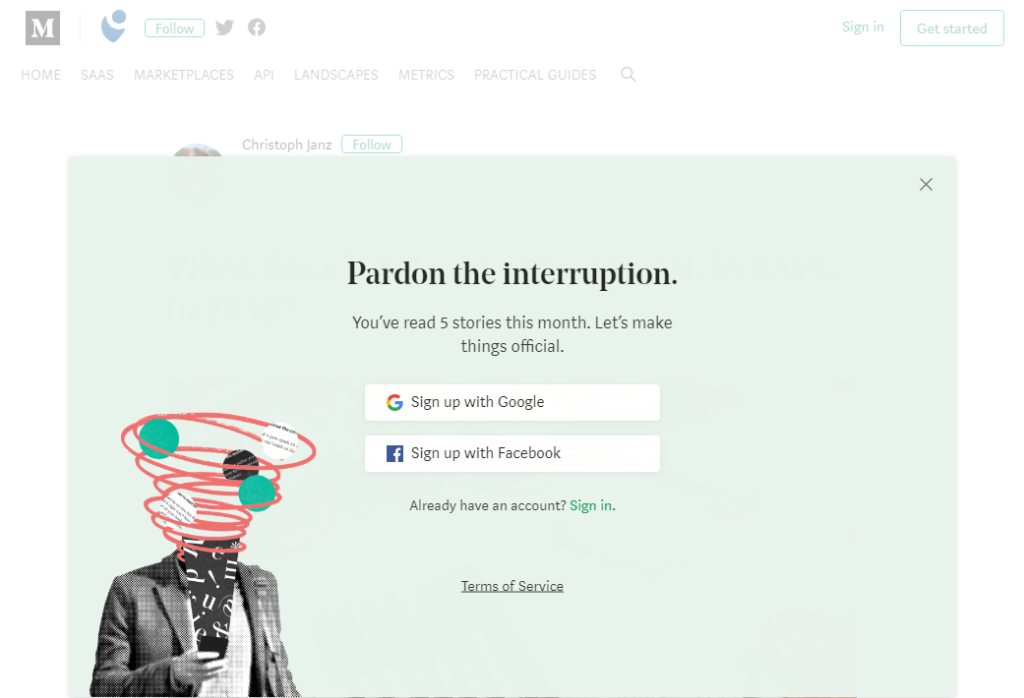
Example of personalized pop-up on Medium.com
Personalization is a complex process as it involves collecting a lot of data and analyzing it over and over again. You can’t afford to send your customers the wrong messages because your reputation, revenue, and customer relationships are at stake. So analyze and test every personalized message you want to send.
When it comes to selecting the right personalization tool for your business, our recommendation is to get the one that has the most advanced features. Keep in mind that the better you personalize the shopping experience, the better your website will convert, so you might as well throw in the big bucks on this one. One tool we’re recommending is Richrelevance, which enables you to leverage dozens of new personalization strategies.
However, no amount of personalization will ever save a website that hasn’t yet figured out the basics. For example, if your online shop isn’t optimized for mobile devices, don’t even bother to drive traffic to it because visitors will not have a great experience. The true role of personalization should be to actually improve the customer experience.
Personalization is not an option anymore, but a requirement if you want your business to survive and thrive. Research shows that in the last year, businesses lost $756 billion because of poor personalization. People not only expect an online shop to be personalized, but they also want more than just the basics.
Have any personalization strategies you want to share? Drop a line below!





